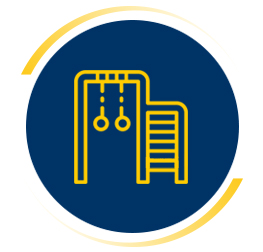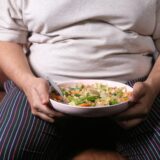Are you hitting a plateau in your weight lifting routine and not seeing the muscle gains you desire? Increasing the intensity of your workouts is a key strategy to break through those barriers and achieve substantial muscle growth. In this guide, we’ll explore effective methods to amp up the intensity of your weight lifting program and optimize your muscle gains.
What Does “Intensity” Mean in Weight Lifting?
Intensity in weight lifting refers to the level of effort and challenge you place on your muscles during a workout. By increasing intensity, you push your muscles harder, which stimulates greater growth and strength gains. Intensity can be modified through various techniques, including heavier weights, increased volume, and advanced training methods.
Effective Strategies to Increase Intensity
1. Progressive Overload
Progressive overload is the cornerstone of muscle growth. To continuously build muscle, you need to gradually increase the weight you lift. Aim to add small increments of weight to your lifts each week or every few workouts. This steady progression challenges your muscles and forces them to adapt and grow.
2. Increase Workout Volume
Boosting the volume of your workouts is another way to enhance intensity. Increase the number of sets and repetitions you perform for each exercise. This not only elevates the total workload but also extends the time your muscles are under tension, which can lead to greater hypertrophy.
3. Reduce Rest Intervals
Cutting down on rest periods between sets is an effective method to elevate workout intensity. Shorter rest intervals keep your heart rate elevated and maintain constant muscle tension. Aim to rest for 30-60 seconds between sets for a more intense workout session.
4. Incorporate Advanced Training Techniques
- Drop Sets: Start with your heaviest weight and perform a set to failure. Then, reduce the weight and continue for additional reps. Drop sets are excellent for pushing muscles beyond their normal limits.
- Supersets: Combine two exercises back-to-back without resting in between. This can be done by targeting opposing muscle groups (e.g., biceps and triceps) or the same muscle group (e.g., chest presses followed by push-ups).
- Giant Sets: Perform a series of 3-5 exercises for the same muscle group consecutively with minimal rest. This method maximizes muscle fatigue and promotes growth.
5. Train to Failure
Training to failure involves performing each set until you cannot complete another rep with proper form. This technique ensures that you are pushing your muscles to their limits, which can stimulate significant growth.
6. Manipulate Tempo
Adjusting the speed of your repetitions can increase intensity. Slow down the eccentric (lowering) phase of your lifts to increase time under tension. For example, take 3-4 seconds to lower the weight and then lift it explosively.
7. Utilize Partial Reps
After reaching failure, perform partial reps to extend the set and exhaust the muscle further. This technique helps target specific ranges of motion and can lead to enhanced muscle activation.
8. Vary Your Exercises
Regularly changing your exercises can prevent adaptation and keep your workouts intense. Incorporate a mix of compound movements (e.g., squats, deadlifts) and isolation exercises (e.g., bicep curls) to hit muscles from different angles.
9. Try Pyramid Training
Pyramid training involves starting with lighter weights and higher reps, then gradually increasing the weight and decreasing the reps for each subsequent set. This method challenges your muscles through various intensities within the same workout.
10. Add Resistance Bands or Chains
Integrate resistance bands or chains into your exercises to vary the resistance throughout the lift. This technique enhances muscle activation and can lead to improved strength and hypertrophy.
11. Increase time under tension
Do reps that move in what I call the the 80-20 range. Meaning don’t go all the way up or down. Keep constant tension on your muscles and maintain a rep range of 12-20 reps when doing this to really maximize the “pump”.
12. Do pause reps
Once you reach failure on a set using moderate weight (something you can do for 12-15 reps) rest in the bottom or stretched portion of the movement for :05 seconds and do more reps using a :05 second rest between each to additional failure.
13. Do a tabata sets
Pick a weight you can do for 20 reps. Do it for 10 reps and rest :10 seconds. Do it again for 10 reps and take another :10 second break. Keep repeating it until you can no longer do 10 reps.
14. Do speed reps using rubber bands
For example, say you do a set of 10 rep barbell curls to failure. Grab a rubber band with handles immediately afterwards and do another 15 reps moving very fast.
Conclusion
Incorporating these intensity-boosting techniques into your weight lifting program can significantly enhance your muscle gains and break through plateaus. Remember to focus on progressive overload, increase workout volume, reduce rest intervals, and utilize advanced training methods. By pushing your muscles to new levels of intensity, you’ll stimulate greater growth and achieve the results you’re striving for.
For the best results, combine these intensity strategies with proper nutrition, adequate rest, and consistent training. Keep challenging yourself, and watch your muscle gains soar!






